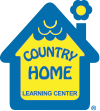The preschool years are the most physical active time in a young child’s life. Preschoolers have mastered the skills of walking and are actively exploring other movement activities such as running, jumping, dancing, and climbing. Nutrition plays a key role in the physical development of preschoolers as healthy eating with adequate amounts of vitamins and minerals obtained from healthy sources are needed to support physical development. It is important for both families and their child care to supply children with food that meets their nutritional needs. By providing children with the nutrients that their bodies need to grow, they are able to develop and reach their physical and mental potential.
Child care professionals play an important role in supporting children to develop a healthy and positive attitude toward good food choices. They talk about healthy food choices, make sure that mealtimes are pleasant occasions, where children and child care providers can socialize with one another. Parents can allow children to make choices at home on menus and at the grocery store.
Strategies to promote positive mealtime experiences:
- Provide children with an interesting variety of foods, and allow them exercise some choice in what they eat.
- Allow children plenty of time to eat and to interact with others, including other children and adults.
- Support and encourage children to help with preparing the eating area, and to assist with serving food and drinks and tidying up after meal.
- Parents/child care providers should take time to eat and talk with children during mealtimes in a sociable way.
- Involve children in planning menus and in food preparation.
- Include foods and eating rituals into mealtimes that are reflective of diverse cultures
Tips for providing healthy food for children:
- Choose a variety of foods, using the Healthy Eating Pyramid.
- Include healthy breads such as multi- grain, whole meal white high fiber, rye, as well as bread rolls, flat breads, and muffins.
- Mix and match healthy bread fillings, such as: lean meats, meat alternatives and dairy foods such as ham, chicken, beef, tofu, eggs, and cheese.
- Try canned fish such as tuna, salmon, sardines.
- Make sure to eat a variety of vegetables including tomato, celery, carrots, sprouts, lettuce.
- Use healthy spreads such as cream cheese spreads, peanut butter, low-fat yogurt and sandwich paste.
- Provide a variety of healthy snacks, including fresh fruit, cheese cubes, vegetable sticks, healthy dips, rice cakes, dried fruit and mixed nuts.
- Provide water with all meals and after vigorous activities.
Grocery shopping:
- Let the kids help put the fruit or vegetable into the grocery cart.
- Teach them how fruits and vegetables give us clues on how ripe they are.
- Ask them “What is this banana telling us?” “Is it ready to eat yet?” “Should we pick that bunch?”
- Teach kids to read food labels as a great way to learn how some foods are better for you than others.
- Choose cereals with low or no added sugar.
- Look for whole grain cereals and breads with at least 4 grams of fiber.
- Take an outing to a local farmer’s market to teach kids about where their food comes from.

